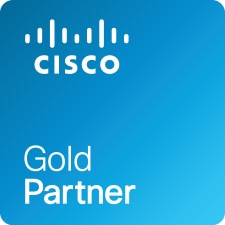April 14, 2017
Winning in the Digital Economy: New Networks, New Rules
Software-defined networking helps organizations meet evolving demands.

The digital economy will be broadcast.
Success for any company in the new, digital, sharing economy is based entirely on how well and how fast information can move from one place to another. How do customers – be they internal end users or external customers – interface with your applications? Is it seamless? Are your comments on Yelp citing lagging website response? Do your reviews on Glassdoor talk about the kludgy interfaces experienced by coworkers? Is it safe?
These are the fears that keep everyone, from the C-Suite to individual contributors, up at night. How can we deliver a best-in-class experience and keep everyone accessing the information they need and should have access to? Not to mention doing it in a way that’s timely and consistent.
Rule #1: Software Defines Everything
Once upon a time, you upgraded your infrastructure by buying new hardware. Now, software determines how effectively your infrastructure – including networking and storage – will meet, and even exceed, the evolving needs of your organization.
What does software-defined networking (SDN) mean to a company? Software enables your network to give priority performance to mission-critical applications. Why does this matter?
- Instant response is critical for delivering great customer experiences. Respond to every swipe and click.
- Software-based network intelligence is essential for supporting real-time video, an increasingly essential element of customer experiences and workplace collaboration. Software enables your network to protect your organization by being both a sensor and a security enforcer. It can detect anomalies that indicate a potential compromise and automatically respond by blocking suspicious traffic.
- SDN enables you to add new capabilities as soon as they’re available. It empowers you to use automation to reduce the time your IT staff spends on network housekeeping — giving companies back time in their day and workload to focus on expanding digital capabilities. And it does this without expanding head count.
Rule #2: Be Smart About How You Allocate Your Network Funds
For decades, network upgrades required large upfront capital expenditures. Organizations got the most out of their network infrastructure for as long as they could. When they needed greater network capabilities, they invested in new hardware. At some point, they outgrew that network and had to invest again.
Software-defined networking dramatically alters these economics. Now, network costs are linked to software licenses. This licensing determines both the current cost of network ownership and the ongoing costs of network upgrades. Fortunately, in this new world, upgrades to software can be made on the business’ schedule – without disrupting coworkers and customers.
Adaptability like this provides a major advantage when volatility and uncertainty have become the norm. Avoidance of big-ticket investment is a benefit for organizations looking to conserve capital.
One challenge faced by the modern company is how to get smarter about allocating finite network software budgets. Which network features will deliver the greatest return on investment today? Which should be on the short list for the near future? Is Cisco offering bundling or promotions that will help us stretch our dollars?
These aren’t questions network managers are used to asking, but they become essential as organizations demand more of their network and budgets are tight. This is where discussing current Cisco Buying Programs can help find additional benefits, like license portability and better together pricing.
Rule #3: Building Services into the Ownership Model
Network excellence has always required support and service. The new network model necessitates improved network skills and knowledge. Continuous delivery of new software into the network requires enhanced knowledge and skills.
IT leadership can rely on several useful strategies to make sure they have the knowledge and skills needed to get the most value out of their networks.
- They can hire a partner to provide ongoing support.
- They can enroll in-house staff in training classes to keep their skills fresh.
- They can combine the two through transfer of expertise.
Some form of service delivery is essential if organizations intend to keep up with the accelerating pace of change in network technology. And the service credits you can acquire through software licensing can go a long way to financing that delivery.
Our customers find that playing by these new rules is well worth the investment of effort and budget. It is impossible to succeed in the future with a network model from the past. Network transformation is essential for digital transformation. And digital transformation isn’t an option – it’s a requirement.
To learn more about how CDW solutions and services can help you modernize your network, visit CDW.com/networking
This blog post brought to you by:

